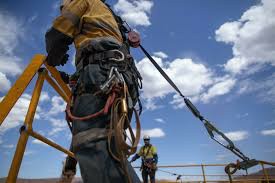


 349,500 Offered Certificates
349,500 Offered Certificates
 24/7 Online Training
24/7 Online Training
 Money Back Guarantee
Money Back Guarantee
 Fully Accredited Courses
Fully Accredited Courses

Created at: 22-02-2025 17:42
In the landscape of workplace health and safety, Working at Heights regulations stand out as a critical aspect of occupational safety in Ireland. Ensuring the safety of workers who operate at elevation is not just a legal requirement; it is an ethical obligation. However, many businesses unfortunately overlook these regulations, exposing themselves to severe consequences.
Working at Heights regulations are designed to protect workers from the dangers of working at elevated levels, including falls that can lead to serious injuries or fatalities. Compliance involves ensuring that the right equipment is available, that the working environment is safe, and that employees are adequately trained.
Examples of companies suffering from the consequences of non-compliance are abundant. A major construction company in Dublin faced significant fines after an incident where inadequate safety measures led to an employee injury from a height. The consequent investigation revealed multiple breaches of safety protocols, leading to a fine of over 50,000 euros and increased scrutiny from safety regulators.
Similarly, a Galway-based roofing firm was found liable after a tragic accident where a worker fell from a height due to lack of proper equipment and training. The company not only faced legal action but also saw a decline in business as clients became hesitant to engage a firm with a safety tarnish.
Failure to adhere to Working at Heights regulations leads to profound financial losses:
In today's digital age, news spreads rapidly. A workplace incident, particularly one related to safety non-compliance, can lead to long-lasting reputational damage. Companies may see potential clients seek alternatives, and employees may worry about their safety, leading to a high turnover rate. A firm’s reputation as a safety-conscious employer can take years to rebuild following non-compliance.
Investing in Working at Heights Training is crucial for compliance and the well-being of employees. Consider the following:
Complying with Working at Heights Safety regulations is not just about avoiding legal troubles; it is fundamentally about protecting your workers and securing your business's future. By investing in Certified Working at Heights Training and adhering to compliance protocols, businesses can avoid the costly pitfalls of non-compliance.
For tailored Working at Heights Course options, including a Working at Heights Course Online, contact us today at [email protected] or visit our website for further details.